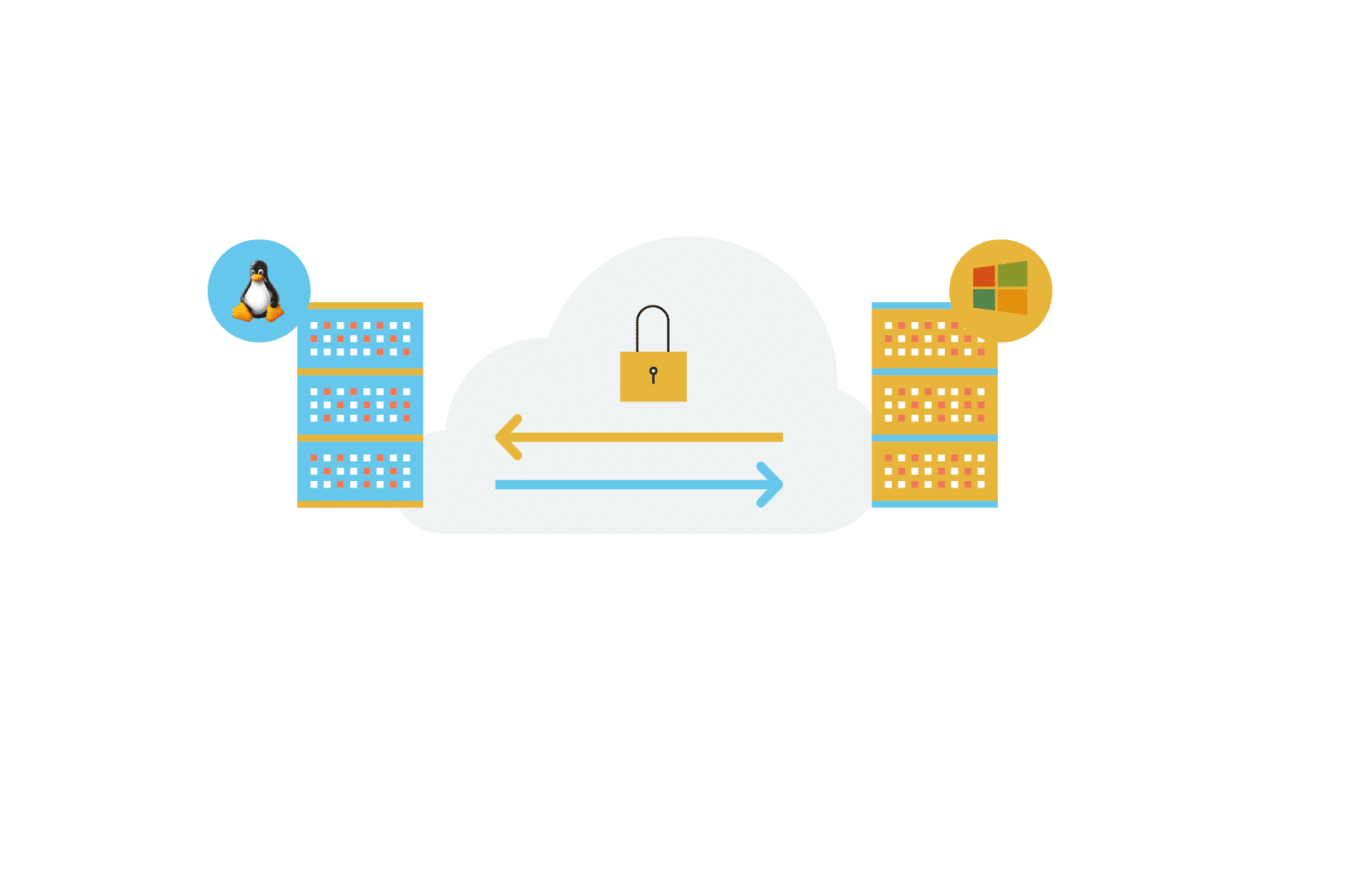I. What is data replication software?
This article is a brief tutorial that introduces data replication software to non-technical people. Some system administrators may find it useful when explaining various replication solutions to management. Here we will use file sync software interchangeably with file synchronization software.
This document uses data replication interchangeably with file replication and file synchronization or data synchronization software. However, there are some differences between them, especially when it comes to structured data and data access.
Data replication software is an application or software suite that creates a copy of files and data from one system to another system on the same network or in a remote location(remote file sync, remote file mirroring, etc). The software applies file changes from a computer (server or desktop), a virtual machine (VM), or network-attached storage (NAS) to another computer, VM or NAS. The software may also copy the entire file instead of copying only file changes.
Data replication aims to have another copy of the data on one or more remote or local systems or devices.
II. Uses of data replication software
Replication software solutions are used to solve various challenges. The following is a non-exhaustive list (Please contact us with the blog URL to add more!)
- Data protection: Replication software protects data by making copies of the same data in a remote safe location (just in case of a disaster). Multiple snapshots can be taken at various times or in a continuous fashion.
- Data sharing: Staff and business partners share data using replication. Replicated data is accessible in different locations (manually or automatically)
- File sharing between business processes: The automated data delivery can be used to share data between applications in different systems or sites
- Automating workflow: file replication can be used to automate many tasks of data delivery between processes.
- Distributing data: Since replication can deliver data to many servers or machines in different locations, one can create configurations to deliver data to one or many systems across the globe or between branch offices.
- Automated data migration: to move data from one system, storage medium, or application to other systems or data centers.
- Moving files and data automatically between applications and processes.
- Ransomware tolerance: if we use a practical solution and configuration, replication may protect data from ransomware, and windows of vulnerabilities can be shrunk.
- Other uses are always discovered by IT staff, engineers, and users.
III. Types of data replication software
B. Asynchronous replication
In the case of asynchronous data replication:
- The storage sub-system performs I/O operations that change and mutate the data or the metadata on the local system first.
- The replication software copies data and metadata changes to the remote location
- The data replication software performs the same operations (or a variation of the operations) on the remote system to synchronize the local and remote system data.
- Now the data and metadata are the same on both systems.
EnduraData real-time replication software for Windows and Linux operates in an asynchronous mode.
Different asynchronous replication solutions perform step 3 above in different manners. Some may send the entire file, others may send only the actual blocks that changed on the local machine, and some may send only the differences between the files in both locations.
A. Synchronous replication
The synchronous data replication software, on the other hand, follows the next few steps:
- The I/O system performs the I/O operations that change or mutate the data or metadata on the remote system.
- If the previous operations were successful, then the same operations are applied to the local system to bring the two in sync.
- Various storage software solutions deal differently with how they handle failure to write data on the remote system.
Download EDpCloud Real-Time Data Replication Software Now.
IV. Modes of data replication
Data replication software can operate in one or a combination of scheduled, on-demand, or real-time modes. EnduraData EDpCloud supports all these modes.
A. Scheduled file replication
Scheduled file replication software operates on a schedule and works as follows:
A scheduler uses a configuration to decide when the software replicates data. The schedule may or may not include the following time resolutions:
- By minute: At the specified minute(s) of the hour, start replication of a file, directory, or multiple directories
- Hourly: Start data synchronization at the specified hour(s)
- Day of the week: Start replication on the specified day of the week
- Day of the month: Start file synchronization on a specific day of the month
- Monthly: Start replication at the specified month.
So at given times, a tool runs to synchronize the local system with a remote system.
B. On-demand replication
On-demand replication is sometimes called ad hoc replication. What this means is that an administrator invokes a command or a utility program (or a click) to start replication as needed. Applications may also invoke commands to automate data transfers.
Two utilities are used for on-demand file replication:
- edq: This tool queues folders or files specified for replication. This system will replicate only file changes
- edmfq: This is a smarter version of edq. It queues file changes for replication. The user can specify some criteria, such as queue-only files modified after a certain date, between dates, etc.
Click here to see additional information for edq, edmfq, and other tools.
C. Real-time replication
Real-time replication is the king of all. It has a file system monitor that tracks file system changes, and it sends data changes as they occur to one or more systems that can be in the same building or a remote location, or even in a different country.
Real time file replication is available for Windows and for Linux.
V. Related articles
Call 1-952-746-4160 for more information.
Share this Post
